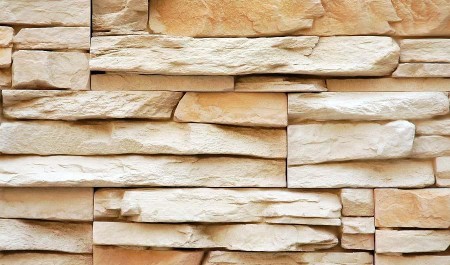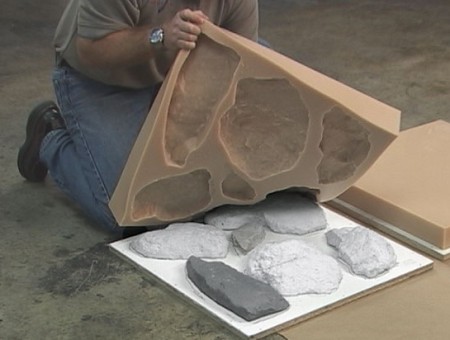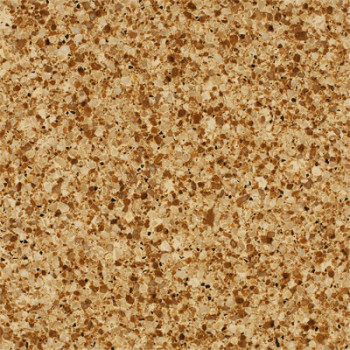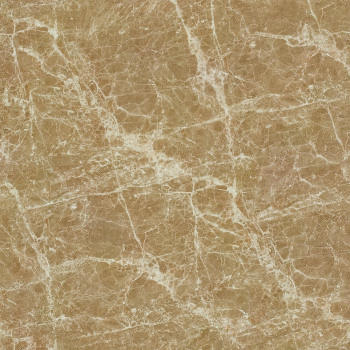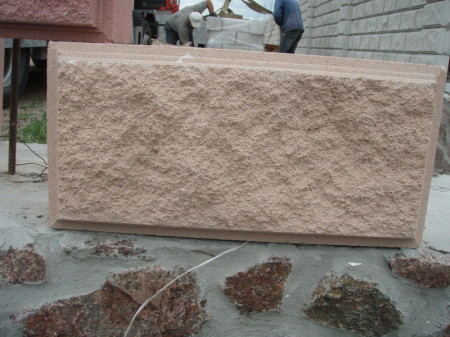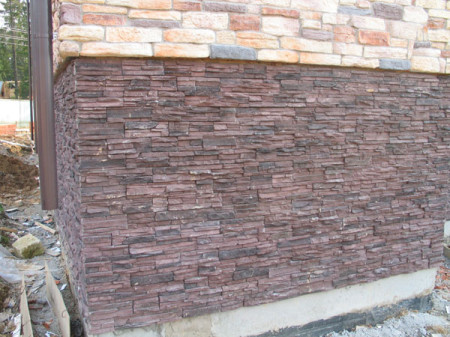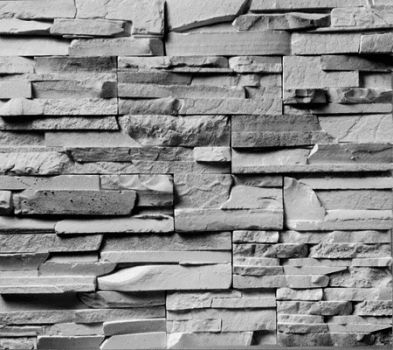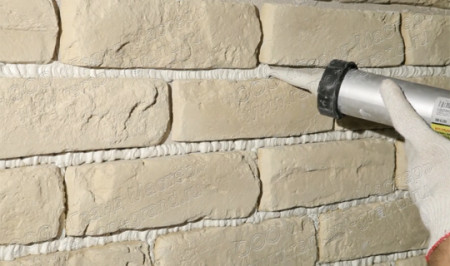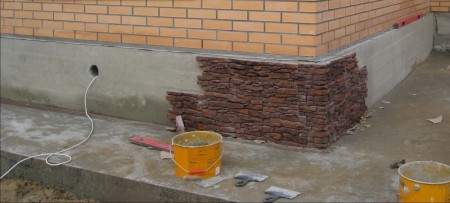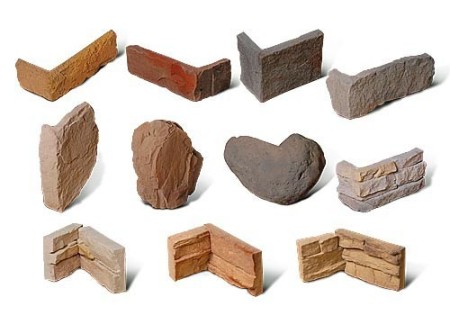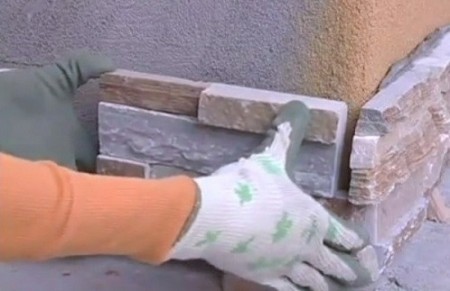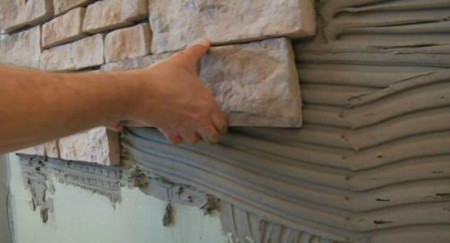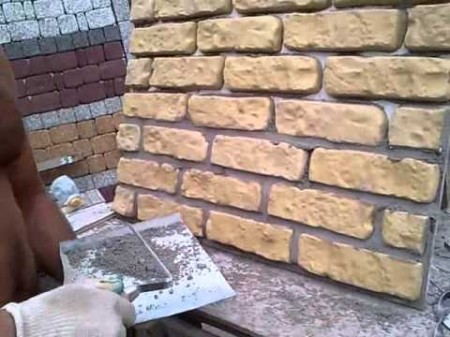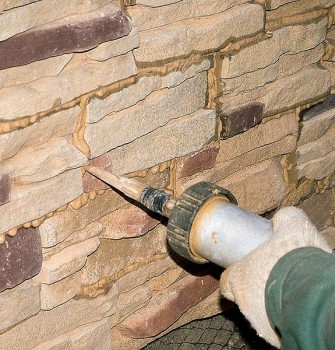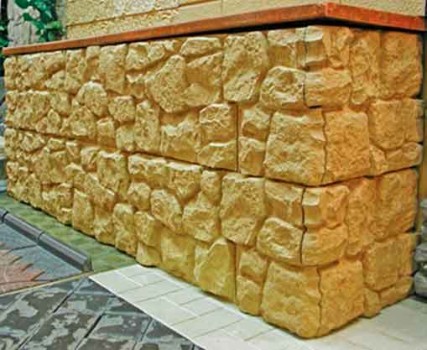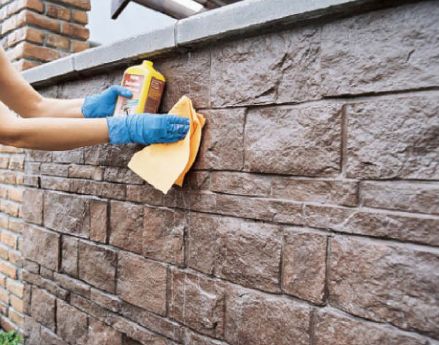Before proceeding directly to the topic of this publication, a few words about what constitutes the socle of the building. In general terms, this is part of the foundation that protrudes above the ground. If the house is on a ribbon foundation, the socle is its upper part, which protrudes above the ground surface. If, on the other hand, the foundation is columnar, then the walls between the supports (the vial) or above the supports (grillage) project in the role of the socle.
The socle is one of the most important elements of the building. From it to a large extent depends on the appearance of the house, and its "longevity". The main task of the socle is to keep the load from the walls and roof of the house and pass it to the foundation, and also to protect the base of the building and its facade from the effects of moisture. The height of the socle is determined by each developer individually, but in any case it does not happen less than 40 centimeters. Most often the socle is constructed of brick or concrete, somewhat less often - from granite. And if natural granite in itself is a decorative element, then the basement of concrete or brick requires facing. Of the many options for modern decoration of the socle, the facing is gaining popularity with an artificial stone. Why this material is so popular, how and from what artificial stone is made, how to choose and place an artificial stone on the plinth - this will be discussed in this article.
Content
Advantages of decorative stone
- Practicality, reasonable cost.
- High strength, long service life.
- Beautiful and attractive appearance, a large variety of textures and colors.
- Light weight, respectively, a small load on the foundation.
- The possibility of finishing the area of any size and shape.
- Ease of installation.
- The ability to implement the original stylistic solution, including in combination with other materials.
There are no significant drawbacks to the decorative stone, except that its service life is less than that of natural material.
Technology of decorative stone production
The technology of manufacturing this finishing material is quite simple: the components are mixed, special dyes are added to the solution. The ready mix is poured into molds, where it freezes to the full.
There are several types of decorative stone, which differ in the components that make up their composition:
- Agglomerate.
- Porcelain tiles.
- Concrete stone.
Facades of buildings are most often faced with a decorative stone made on the basis of a concrete mix. For the manufacture of this material are used:
- White or gray cement as a base.
- Sand or expanded clay as a filler.
- Fibers, gypsum or clay as a plasticizer.
- Mineral additives that increase resistance to high temperatures.
The quality characteristics of the finished material largely depend on the filler. For example, expanded clay strongly reduces the weight of the material and improves its thermal insulation characteristics.
One of the most modern technologies for making artificial stone is vibration. In the production process, gypsum or silicone molds are filled with the finished mixture. The result is a finished material in the form of a tile with a smooth back side, and having a natural stone texture with a face.
In production, only natural dyes are used that do not fade and do not change color under the influence of direct sunlight or high humidity. The decorative stone is dried for 30 days. After the expiration of this period, the ready material acquires enough strength and becomes completely ready for work.
As for the shape of the decorative stone, all the materials presented in the sale can be divided into:
- Imitating a brick, but in a variety of colors.
- Imitating natural granite. The material has irregular geometric shapes that copy the texture of ordinary cobblestone or a piece of marble.
- Imitating shale. The material has the right shape, which greatly simplifies the cladding work.
Choose an artificial stone for the plinth lining
As in the modern market of building materials an artificial stone of different quality is sold, sometimes quite doubtful, and made on a different basis - polymer, concrete or gypsum, it is necessary not to be too lazy to ask the seller - which stone is better used for finishing the socle with artificial stone. One of the best materials for this work is an artificial stone, made on a concrete basis. Looking at the sample, you should pay attention to the following points:
- The texture of an artificial stone should accurately repeat the texture of a natural analog.
- There should be no pores on the surface of the stone.
- The stone should have a uniform color - this indicates the observance of the production technology, according to which the dye is added to the molding mixture, and not applied to the finished product.
In addition, it does not hurt to inquire about the manufacturer of the material. All this information, as well as all the main technical characteristics of the material - strength, water absorption coefficient, frost resistance, etc., you must provide a sales manager, or you can find it on the official website of the manufacturer.
Facing the socle with artificial stone
Depending on the method of laying the artificial stone, there are several technologies for the lining of the base:
- Seamless.
- With seaming.
The processes of laying with seaming and without seams are no different, but in the first case, it is necessary to observe the same intervals between individual elements of the cladding. If you use an artificial stone in the form of plates, you do not need to do this.
The whole process of facing the socle can be divided into two main stages: the preparation of the base of the socle, and the direct laying of the artificial stone on the plinth. The composition of the materials from which the socle and artificial stone is made is very similar, and this creates very good initial conditions for adhesion (adhesion of materials among themselves).
Therefore, the quality and longevity of the lining depends to a large extent on the state of the plinth surface and the elements of the lining material. Getting to work, carefully inspect the rear surface of the artificial stone. On it there should not be a touch of cement milk. Plaque strongly degrades the adhesion of materials, and it must be removed.
With regard to the preparation of the cap surface, then the following manipulations must be carried out:
- Carefully clean the surface of the socle with a metal brush and a small spatula.
- All cracks, chips and grooves zashpatlevat, cut unevenness. After the putty dries, the surface is cleaned, then primed and wait until the primer dries completely.
Finishing the base of the house with an artificial stone should be done in the warm season, the weather should be dry and sunny. Of course, facing works can be carried out at negative temperatures, but this is associated with some discomfort in the work and increased cash costs, as it will have to buy an expensive frost-resistant adhesive, or take care of heating the cap surface, which is quite difficult to do.
To ensure the proper quality of work, it is necessary to strictly observe the following technology of laying artificial stone on the plinth:
First, arrange the cladding elements on a flat and clean horizontal surface to get an idea of their proper location. At this stage it is convenient to customize the individual elements to the desired size with a grinder or a hacksaw.
Further, the surface of the socle is wetted with water and a pre-diluted glue mixture is applied to its small area. Do not rush to apply glue to a large area, because it quickly freezes. If the surface of the socle is too uneven, and it is necessary to level it with a large layer of glue, it is recommended to attach a metal mesh for the plaster to the surface.
The first row begins to stack from the top corner.
Thus, the adhesive mixture does not get on the surface of the lining material. Angles can be made independently, using special crosses to hold corners, and you can use special corner elements.
The first row is basic, so you need to put it completely. All the following rows are made in a scramble, for an attractive appearance of the cladding.
In the process of laying the lining, it is heated into the solution by rotational movements to the right and to the left. Thus, the tile will fit better in place and from under it the excess air is removed. If the laying is carried out with the seaming of the seam, then the solution protruding from the seam is immediately removed.
To ensure that the top row does not slide down, a metal profile is attached below it. About a day later, you can clean the seams between the cladding elements.
For grouting use the same glue as for facing works, or special trowelling mixes. If during the grouting process this material falls on the surface of the artificial stone, it must be removed immediately.
After the joints are completely dry, they are rubbed with a file or sandpaper.
Facing the foundation of the house with an artificial stone
Sometimes it is necessary to make the facing not only of the basement, but also of a certain part of the foundation of the building. The procedure for laying the foundation is not much different from the one described above, but there are still several important details that need to be considered:
- For facing, you need to buy glue, which has increased resistance to moisture penetration.
- For the foundation lining with artificial stone, it is strongly recommended to make a seamless stitching to prevent moisture from entering.
- It is desirable to use the facing material made on the basis of Portland cement - it is more durable.
- After finishing the work on the foundation lining with artificial stone, the surface must be treated with a special hydrophobizing compound.
In the complex, all these actions will create a foundation for a fairly reliable additional protection against moisture and mechanical damage.
Artificial stone, due to its high-quality and decorative characteristics, is one of the most popular facing materials that are used to decorate the basement, socle and facade of the house. As is clear from the reading, the technology of facing itself is not difficult, you just need to choose the right material and follow the instructions exactly, and then the quality of the facing will be at an appropriate level.
A few recommendations for the care of the lining of artificial stone
To ensure that the lining made of artificial stone lasts as long as possible and has not lost its original appearance throughout the entire service life, and has not been destroyed, it is necessary periodically to apply a water repellent composition, depending on the amount of precipitation, which prevents penetration of moisture into the interior. This applies to both the lining of the foundation and the base. At the design stage of the house, it is necessary to provide a competent water drainage system, which will prevent it from falling onto the artificial stone. If the lined surface is constantly exposed to sewage, this will lead to its detachment. Also, to maintain the integrity of the facing material, it is necessary to periodically inspect the surface and timely seal up the resulting cracks and remove other defects, up to replacement of the individual damaged elements.



